The best tanks of the Second World Discovery
Constant attempts to bury the idea tank do not find their realization. Despite the rapid evolution of anti-tank weapons, there is still no more reliable means to cover the soldiers than heavy armored vehicles.
I offer you a review of the outstanding tanks of the Second World War, created on the basis of the Discovery programs - "Killer Tanks: Steel Fist" and the Military Channel - "Ten best tanks of the twentieth century." Undoubtedly, all the cars from the review are worthy of attention. But I noticed that when describing tanks, experts do not consider his combat history in its entirety, but they only talk about those episodes of the Second World War when this machine was able to show itself in the best possible way. It is logical to immediately break the war into periods and consider which tank was the best and when.
I draw your attention to two important points:
First, do not confuse the strategy and technical characteristics of machines. A red flag over Berlin does not mean that the Germans were weak and did not have good equipment. It also follows that the possession of the best tanks in the world does not mean that your army will advance victoriously. You can trite crush amount. Do not forget that the army is a system; competent use by the adversary of its diverse forces can put you in a difficult position.
Secondly, all disputes, “who is stronger than the IS-2 or the Tiger, do not make much sense. Tanks rarely fight with tanks. More often, their opponents are enemy defensive lines, fortifications, artillery batteries, infantry and automotive vehicles. In World War II, all tank losses were due to anti-tank artillery (which is logical - when the number of tanks went to tens of thousands, the number of guns was hundreds of thousands - more than an order of magnitude!). Another fierce enemy of tanks is mines. About 25% of military vehicles were blown up on them. I wrote a few percent on my account aviation. How much then was left for tank battles ?!
Hence the conclusion that a tank battle near Prokhorovka is a rare exotic. Currently, this trend continues - instead of the anti-tank "forty-point" act RPGs.
Well, now let's go to our favorite cars.
Period 1939-1940. Blitzkrieg
... Pre-dawn mist, fog, shooting and the roar of engines. On the morning of May 10, the Wehrmacht 1940 breaks into Holland. Belgium fell through the 17 days, the remnants of the British Expeditionary Force evacuated across the English Channel. June 14 German tanks appeared on the streets of Paris ...
One of the conditions of the “lightning war” is the special tactics of using tanks: the unprecedented concentration of armored vehicles in the direction of the main attacks and the perfectly coordinated actions of the Germans allowed the “steel claws” of Goth and Guderian to crash into the defense hundreds of kilometers in advance. . Unique tactical reception required special technical solutions. German armored vehicles were necessarily equipped with radio stations, while the tank battalions were air traffic controllers for emergency communication with the Luftwaffe.
It was at this time that the “finest hour” of Panzerkampfwagen III and Panzerkampfwagen IV fell. Behind such clumsy names are the terrible fighting vehicles that have rolled up European roads, the icy expanses of Russia and the sands of the Sahara on their tracks.
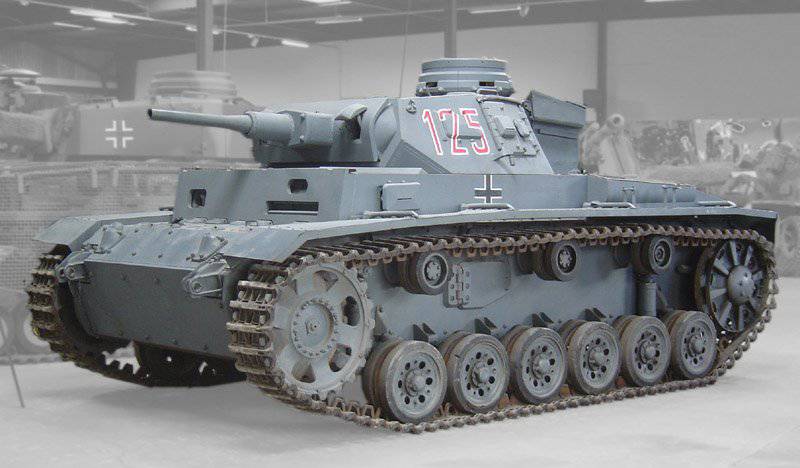
The PzKpfw III, better known as the T-III, is a light tank with a 37 mm gun. Reservations from all angles - 30 mm. Superior quality - Speed (40 km / h on the highway). Thanks to the sophisticated optics of Carl Zeiss, ergonomic crew jobs and the presence of a radio station, the Troika could successfully fight much heavier vehicles. But with the advent of new opponents, the flaws of the T-III appeared more clearly. The Germans replaced the 37 mm guns with the 50 mm guns and covered the tank with mounted screens - temporary measures gave their results, T-III fought for several more years. By 1943, the T-III was discontinued due to the complete exhaustion of its resource for modernization. Total German industry has released 5000 "triples".
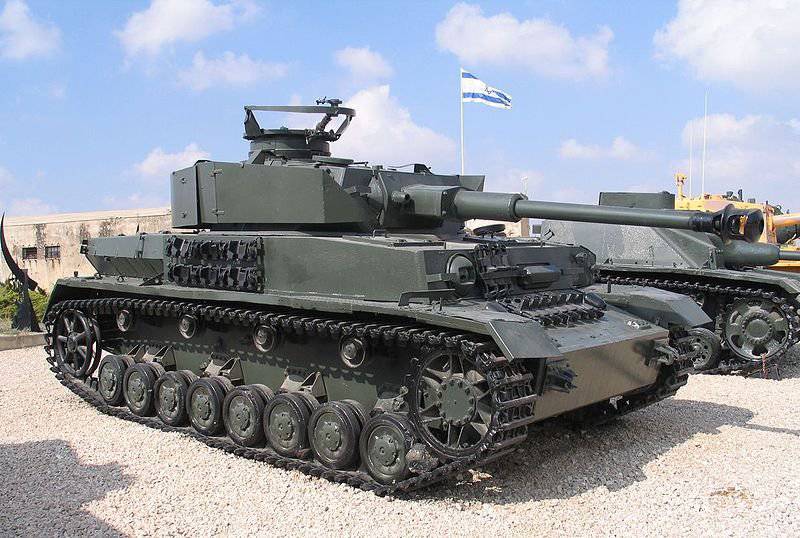
The PzKpfw IV, which became the most massive Panzervaffe tank, looked much more serious - the Germans had time to build 8700 machines. Combining all the advantages of a lighter T-III, the Quartet had high firepower and security - the thickness of the frontal plate was gradually brought to 80 mm, and the shells of its 75 mm long-barreled gun pierced the armor of enemy tanks like a foil (by the way, 1133 early modifications with a short-barreled gun).
The weak points of the car are too thin sides and feed (only 30 mm on the first modifications), the designers neglected the inclination of the armor plates for the sake of manufacturability and convenience of the crew.
Seven thousand tanks of this type were left lying on the battlefields of the Second World War, but the T-IV story did not end there - the Quartet were exploited in the armies of France and Czechoslovakia until the beginning of the 1950-s and even took part in the Six-Day Arab-Israeli War 1967 of the year.
Period 1941-1942. Red Dawn
- General Reinhard, Commander of the 41 Wehrmacht Tank Corps
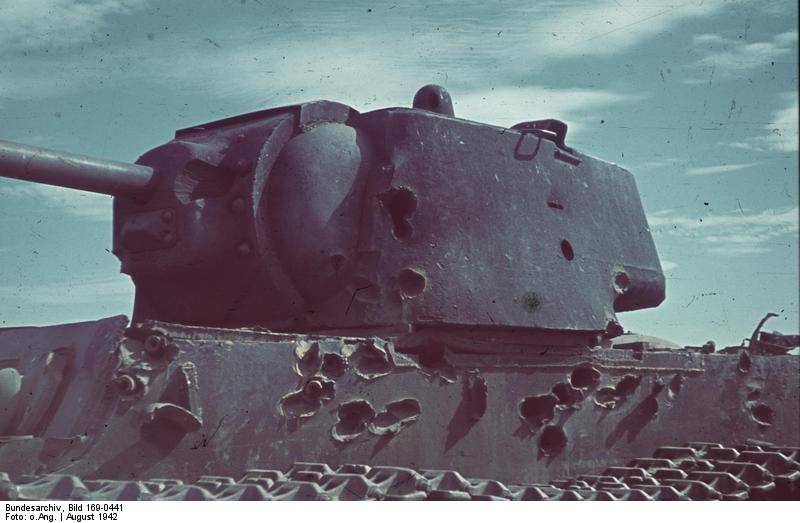
In the summer of 1941, the KV tank crushed the elite units of the Wehrmacht with the same impunity, as if it rolled out onto the Borodino field in the 1812 year. Invincible, invincible and prohibitively powerful. Until the end of 1941, in all the armies of the world there were no weapons at all, capable of stopping the Russian 45-ton monster. KV was 2 times heavier than the largest tank of the Wehrmacht.
Armor KV is a wonderful song of steel and technology. 75 mm steel steel from all angles! Frontal armor plates had an optimal angle of inclination, which further increased the KV's armor resistance — the German 37 mm anti-tank guns did not even take it at close range, and the 50 mm guns were no further than 500 meters. At the same time, the long-barreled 76 mm F-34 (ZIS-5) gun made it possible to hit any German tank of that period from 1,5 kilometers from any direction.
If battles like the legendary battle of Zinovy Kolobanov occurred regularly, then 235 KV tanks of the Southern Military District could completely destroy Panzervaffe in the summer of 1941. The technical capabilities of the KV tanks allowed this in theory. Alas, not so simple. Remember - we said that tanks rarely fight with tanks ...
In addition to the invulnerable KV, the Red Army had an even more terrible tank - the great warrior T-34.
- the opinion of the German tanker from the 4 Tank Division, destroyed by T-34 tanks in the battle of Mtsensk 11 in October 1941 of the year.
Neither the scope nor the objectives of this article allow to fully cover the history of the T-34 tank. Obviously, the Russian monster had no analogues in the 1941 year: 500-strong diesel, unique booking, 76 mm F-34 gun (generally similar to the KV tank) and wide tracks - all these technical solutions provided the T-34 with the optimal ratio of mobility, fire power and security. Even separately, these parameters were higher for the T-34 than for any Panzerwae tank.
The main thing - the Soviet designers managed to create a tank exactly the way it was needed by the Red Army. T-34 perfectly matched the conditions of the Eastern Front. Extreme simplicity and manufacturability of the design allowed in the shortest possible time to start mass production of these combat vehicles, as a result - T-34 were easy to operate, numerous and omnipresent.
Only in the first year of the war, by the summer of 1942, the Red Army received about thirty-fours around 15000, and in total more than 84 000 T-34 of all modifications were released.
The journalists of the Discovery program jealously reacted to the successes of the Soviet tank building, constantly hinting that the American design of the Christie is at the heart of a successful tank. In a joking manner, the Russian “rudeness” and “uncriticalness” got: “Well! I did not have time to get into the hatch - it was all scratched! ”The Americans forget that convenience was not a priority feature of armored vehicles on the Eastern Front; the fierce nature of the fighting did not allow tankmen to think about such trifles. The main thing - do not burn in the tank.
There were thirty-fours and much more serious flaws. Transmission is the weakest link in the T-34. German design school preferred the front location of the gearbox, closer to the driver. Soviet engineers went on a more efficient way - the transmission and engine were compactly located in an isolated compartment in the T-34 aft. There was no need for a long drive shaft through the entire hull of the tank; simplified design, reduced machine height. Isn't it a great technical solution?
Cardan was not needed. But were needed thrust control. At T-34 they reached 5 meters in length! Imagine what effort was required to make the driver? But this did not create any special problems - in an extreme situation, a person is able to run on his hands and row with his ears. But what the Soviet tankers could withstand could not withstand the metal. Under the influence of monstrous loads of thrust were torn. As a result, many T-34s went into battle on a single, pre-selected, transmission. During the battle, they preferred not to touch the gearbox at all - in the opinion of tank veterans, it was better to sacrifice mobility than to suddenly turn into a standing target.
T-34 completely ruthless tank, both in relation to the enemy, and in relation to its own crew. It remains only to admire the courage of tankers.
Year 1943. Menagerie
- frequent description of meetings with PzKPfw VI from the memoirs of tank crews
1943 year, the time of the great tank battles. In an effort to regain lost technical superiority, Germany is creating by this time two new types of “super-weapons” - the heavy tanks “Tiger” and “Panther”.
Panzerkampfwagen VI Tiger Ausf. H1 was created as a heavy breakthrough tank capable of destroying any adversary and taking the Red Army to flight. By Hitler’s personal order, the thickness of the frontal armor plate should have been at least 100 mm, the sides and stern of the tank were protected by eight centimeters of metal. The main weapon - 88 mm gun KwK 36, created on the basis of a powerful anti-aircraft gun. Its capabilities are indicated by the fact that when firing a captured Tiger gun, five successive hits on a target of 40 × 50 cm from 1100 m were achieved. In addition to high flatness, KwK 36 inherited a high rate of anti-aircraft gun. In combat conditions, "Tiger" fired eight shells per minute, which was a record for such large tank guns. Six crew members were conveniently located in an invulnerable steel box, mass 57 tons, looking at the wide Russian spaces through the high-quality optics Carl Zeiss.
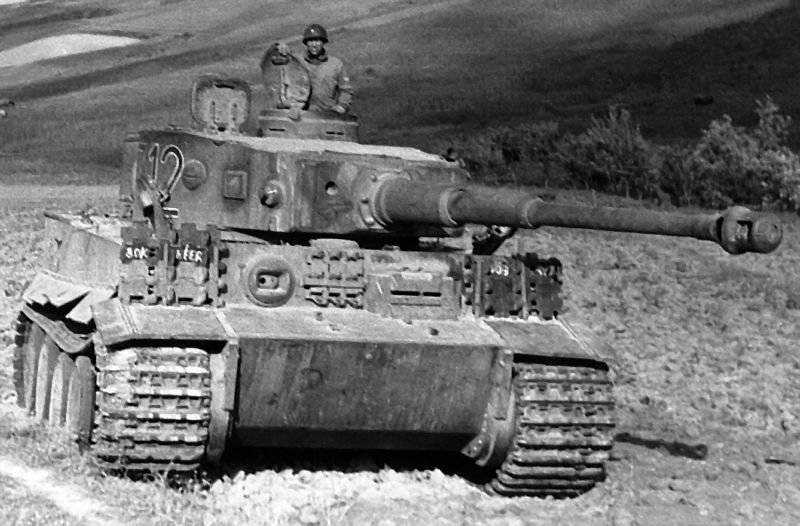
The bulky German monster is often described as a slow and clumsy tank. In reality, "Tiger" was one of the fastest combat vehicles of the Second World War. 700-strong engine "Maybach" accelerated "Tiger" to 45 km / h on the highway. No less fast and maneuverable, this thick-skinned tank was on rough terrain, thanks to an eight-speed hydromechanical gearbox (almost automatic, like a Mercedes!) And complicated onboard clutches, with a double power supply.
At first glance, the design of the suspension and tracked propulsion was a parody of itself - caterpillars 0,7 meters wide requiring the installation of a second row of rollers on each side. In this form, the "Tiger" did not fit on the railway platform, each time it was necessary to remove the "ordinary" tracks and the outer row of rollers, instead of installing thin "transport" tracks. It remains to be amazed at the strength of those guys who “smashed” the 60-ton colossus in the field. But there were also advantages to the strange suspension of the “Tiger” - two rows of skating rinks ensured a high smoothness of the course, our veterans witnessed cases when the “Tiger” shot on the move.
The Tiger had one more flaw that frightened the Germans. It was the inscription in the technical note in each vehicle: “The tank is worth 800 000 Reichsmarks. Keep him safe!"
According to the perverted logic of Goebbels, the tankers should have been very happy to learn that their "Tiger" is like seven T-IV tanks.
Realizing that the "Tiger" is a rare and exotic weapon of professionals, the German tank builders created a simpler and cheaper tank, with the intention of turning it into a mass medium Wehrmacht tank.
Panzerkampfwagen V "Panther" is still the subject of heated debate. The technical capabilities of the car do not cause any complaints - with the 44 mass, the tons of Panther exceeded the T-34 mobility, developing the 55-60 km / h on a good highway. The tank was armed with a 75 mm cannon KwK 42 with a barrel length 70 caliber! An armor piercing projectile fired from its infernal vent flew 1 a kilometer in the first second - with such TTX the Panther gun could pry through any Allied tank at a distance of over 2 kilometers. Panther's reservation is also considered worthy by most sources - the thickness of the forehead varied from 60 to 80 mm, while the slopes of the armor reached 55 °. The board was defended weaker - at the level of T-34, so it was easily hit by Soviet anti-tank weapons. The lower part of the side was additionally protected by two rows of rollers on each side.
The whole question in the very appearance of "Panther" - did the Reich need such a tank? Perhaps you should focus on upgrading and increasing the production of proven T-IV? Or spend money to build invincible "Tigers"? As it seems to me, the answer is simple - in 1943, nothing could save Germany from defeat.
Total built less 6000 "Panther", which was clearly not enough to saturate the Wehrmacht. The situation was aggravated by the drop in the quality of armor of tanks due to the lack of resources and alloying additives.
"Panther" was the quintessence of advanced ideas and new technologies. In March, at night 1945, near Balaton, hundreds of Panthers, equipped with night vision devices, attacked the Soviet troops at night. Even this did not help.
Year 1944. Go to Berlin!
Changed conditions required new means of warfare. By this time, Soviet troops had already received a heavy tank breakthrough EC-2, armed with 122 mm howitzer. If an ordinary tank projectile hit caused a local destruction of the wall, then the 122 millimeter-shaped howitzer projectile demolished the entire house. What was required for successful assault operations.
Another formidable weapon of the tank is the 12,7 mm DShK machine gun mounted on the turret on the pivot mount. The bullets of a large-caliber machine gun reached the enemy even behind thick brick masonry. The DShK greatly increased the capabilities of Is-2 in battles on the streets of European cities.
The thickness of the reservation EC-2 reached 120 mm. One of the main achievements of Soviet engineers is the cost-effectiveness and small metal intensity of the EC-2 design. With a mass comparable to that of the Panther, the Soviet tank was much more seriously defended. But too dense layout required the placement of fuel tanks in the department of management - when penetrating the armor, the crew of the Is-2 had little chance to survive. Especially risked the driver, who did not have its own hatch.
The liberators of the EC-2 became the personification of the Victory and were in service with the Soviet army for almost 50 years.
The next hero, МХNUMX "Sherman", managed to make war on the Eastern Front, the first cars of this type came to the USSR back in the 4 year (the number of MNNXX supplied under Lend-Lease was 1942 tanks). But fame came to him only after a massive use in the West in 4.
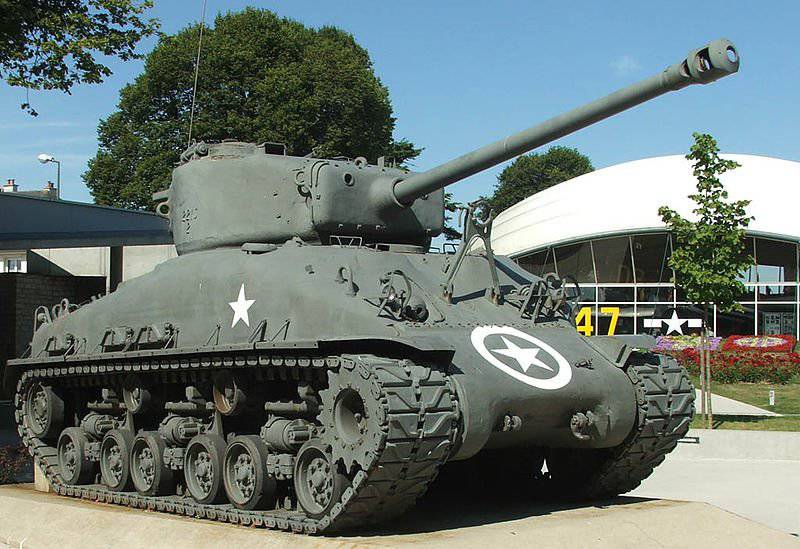
Sherman is the pinnacle of rationality and pragmatism. All the more surprising that the United States, which had 50 tanks at the beginning of the war, managed to create such a balanced combat vehicle and rivet 1945 49 “Shermans” of various modifications to 000 year. For example, the Sherman with a gasoline engine was used in the ground forces, while the Marine Corps received a modification М4А2, equipped with a diesel engine. American engineers rightly believed that this would greatly simplify the operation of tanks - the diesel could be easily found from the sailors, unlike high-octane gasoline. By the way, it was this modification МХNUMXА4 that entered the Soviet Union.
No less famous are the special versions of the Sherman - the tank hunter Firefly, armed with the British 17-pound cannon; The Jumbo is a heavily armored version in an assault body kit and even an amphibious Duplex Drive.
Compared to the fast-moving forms of the T-34, the Sherman is a tall and awkward goof. Possessing the same weaponry, the American tank significantly loses the mobility of the T-34.
What did Emcha (so our soldiers called МХNUMX) like so much to the Red Army commanders that the elite units, such as the 4 Guards Mechanized Corps and the 1 Guards Tank Corps, were completely transferred to them? The answer is simple: Sherman had an optimal balance of reservations, firepower, mobility and ... reliability. In addition, the Sherman was the first tank with a hydraulically driven turret (this provided special precision guidance) and a gun stabilizer in the vertical plane - tankers recognized that in a duel situation, their shot was always the first. Of the other advantages of the Sherman, which are usually not listed in the tables, there was little noise, which made it possible to use it in operations where stealth is needed.
The Middle East gave Sherman a second life, where this tank served until the 70s of the 20th century, taking part in more than one dozen battles. The last Shermans completed their military service in Chile at the end of the twentieth century.
Year 1945. Ghosts of future wars
Many people expected that the long-awaited and lasting peace would come after the monstrous sacrifices and destruction of the Second World War. Alas, their expectations were not met. On the contrary, ideological, economic and religious contradictions have become even more acute.
It was well understood by those who created new weapons systems - so the military-industrial complex of the victorious countries did not stop for a minute. Even when the Victory was already evident, and fascist Germany was beating in its death agony in the design bureau and at the factories theoretical and experimental research continued, the development of new types of weapons was carried out. Special attention was paid to armored forces that had proven themselves well during the war. Starting with bulky and uncontrollable multi-turbo monsters and ugly tankettes, in just a few years tank construction has reached a fundamentally different level. where again faced a lot of threats, because anti-tank weapons successfully evolved. In this regard, it is curious to look at the tanks with which the Allies ended the war, what conclusions were made and what measures were taken.
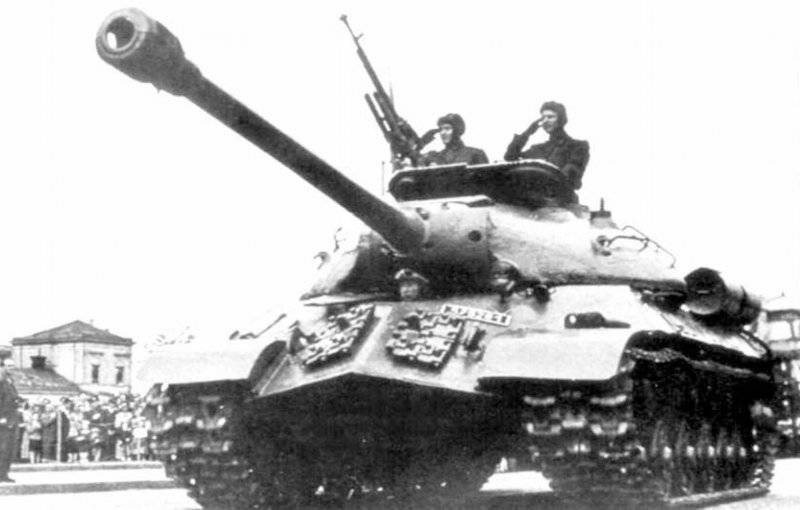
In the USSR, in May 1945, the first batch of EC-3 was rolled out of the factory workshops of Tankograd. The new tank was a further upgrade of the heavy EC-2. This time, the designers went even further - the slope of the welded sheets, especially in the front of the case, was brought to the maximum possible. Thick 110-mm frontal armor plates were positioned in such a way that a three-pitch, tapered, forward nose was formed, called the pike nose. The tower received a new flat shape, which provided the tank with even better counter-missile protection. The driver got his own hatch, and all of the viewing slots were replaced with modern periscope instruments.
The EC-3 was a few days late by the end of the fighting in Europe, but the new beautiful tank took part in the Victory Parade on a par with the legendary T-34 and KV, still covered in soot of recent battles. Visual change of generations.
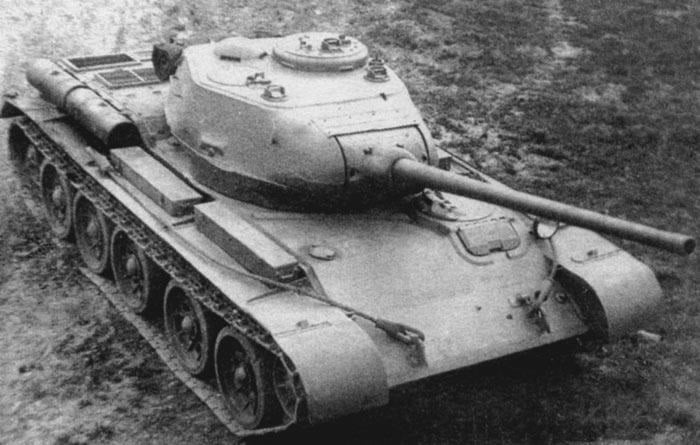
Another interesting novelty was the T-44 (in my opinion - a landmark event in the Soviet tank building). Actually, it was developed in 1944 year, but did not have time to take part in the war. Only in 1945, the troops received a sufficient number of these excellent tanks.
A major drawback of the T-34 was the tower shifted forward. This increased the load on the front rollers and made it impossible to strengthen the frontal armor of the T-34 - the “thirty-fours” ran to the end of the war with the 45 mm forehead. Realizing that the problem just does not solve, the designers decided on a complete recomposition of the tank. Thanks to the cross-sectional placement of the engine, the size of the logging equipment decreased, which allowed the turret to be mounted in the center of the tank. The load on the rollers leveled off, the frontal armor plate increased to 120 mm (!), And its inclination increased to 60 °. Improved working conditions for the crew. T-44 became the prototype of the famous T-54 / 55 family.
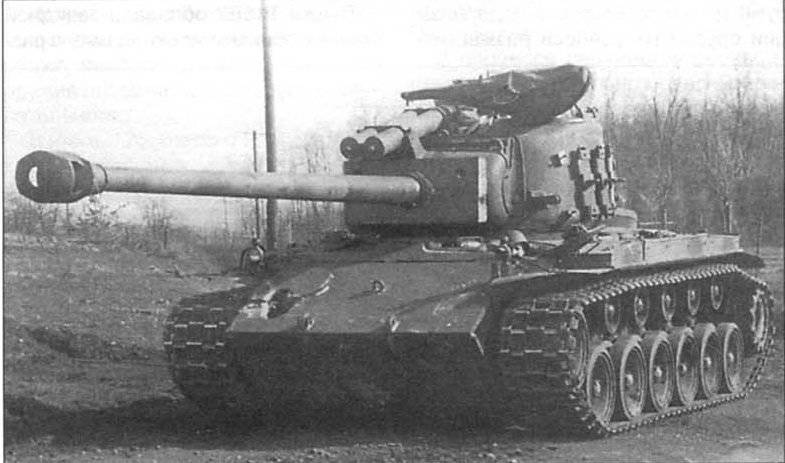
The specific situation has developed overseas. The Americans guessed that in addition to the successful "Sherman", the army required a new, heavier tank. As a result, the M26 "Pershing" appeared, a large medium tank (sometimes considered heavy) with powerful armor and a new 90 mm gun. This time the Americans could not create a masterpiece. Technically, the "Pershing" remained at the level of "Panther", while possessing somewhat greater reliability. The tank had problems with mobility and maneuverability - the M26 was equipped with an engine from the Sherman, while having a lot of tons on the 10. The limited use of “Pershing” on the Western Front began only in February 1945. Next time the Pershing went into battle already in Korea.
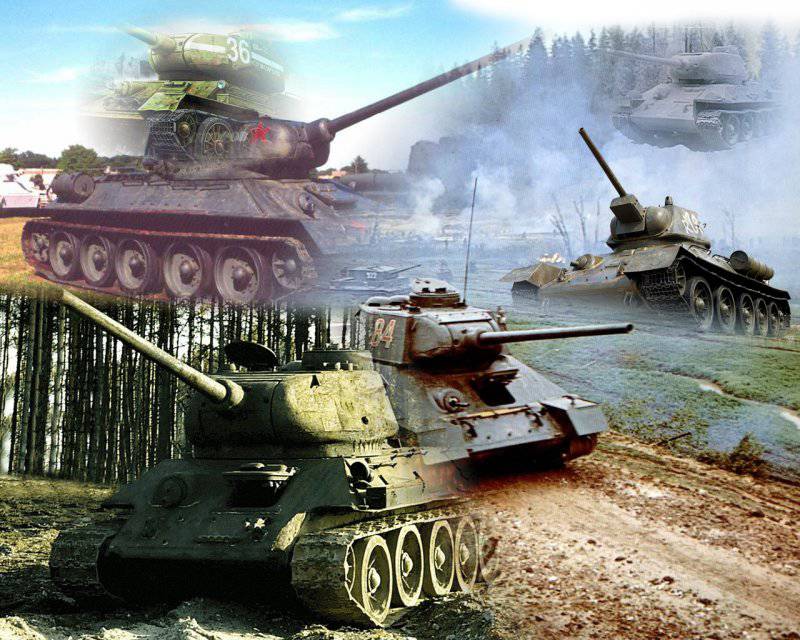
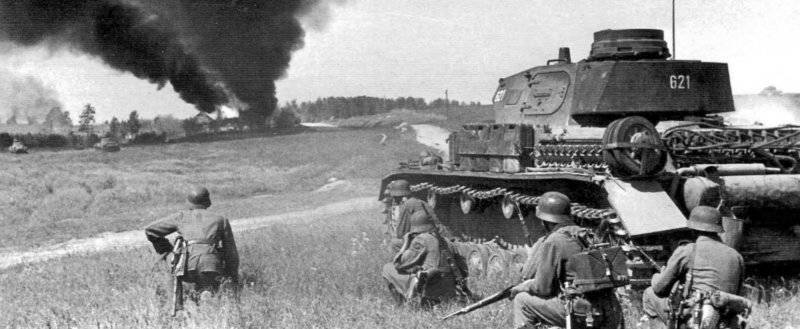
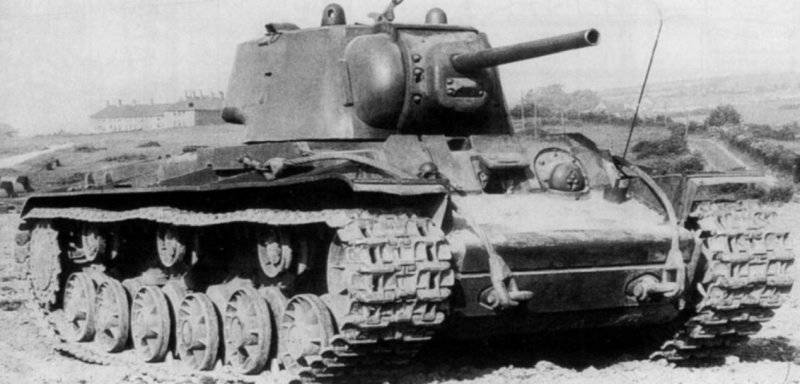
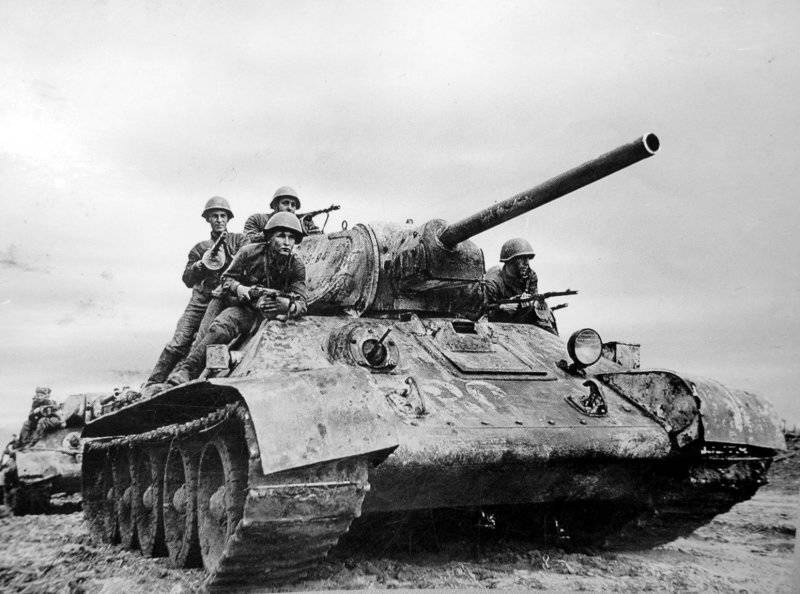
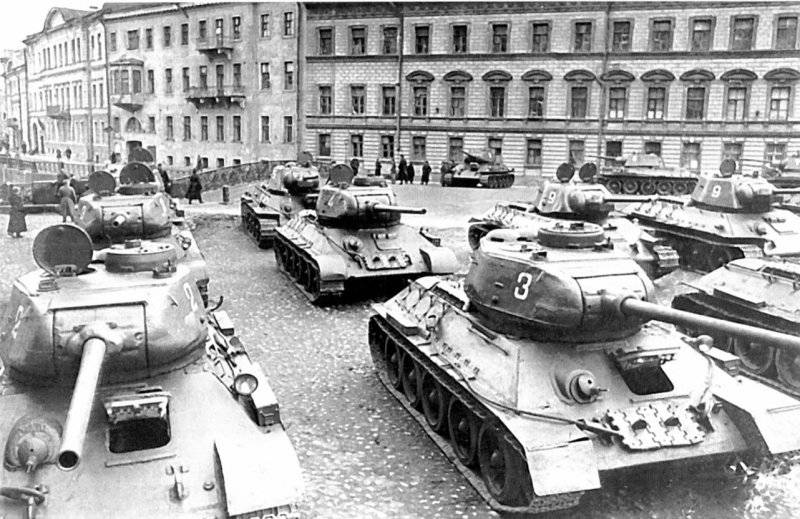
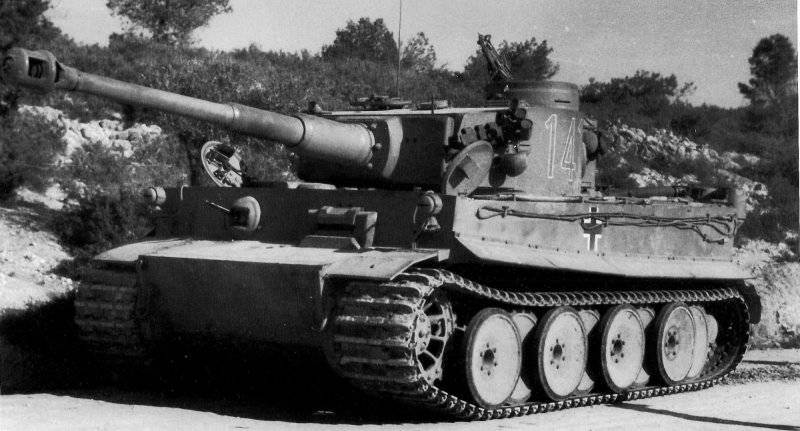
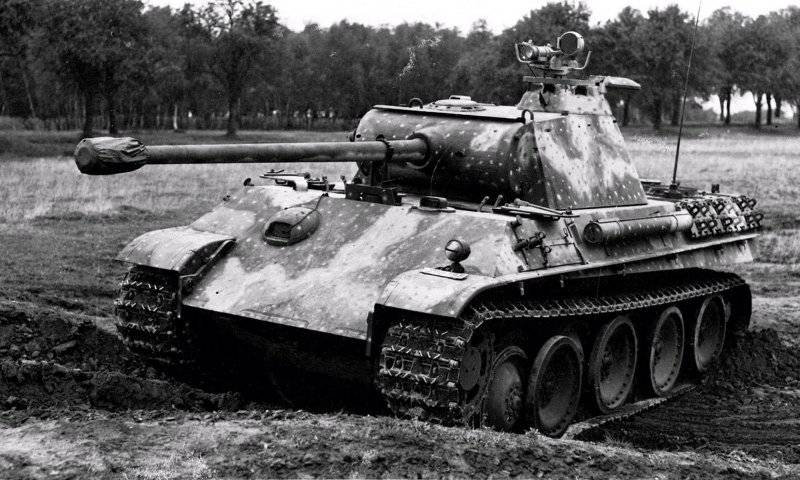
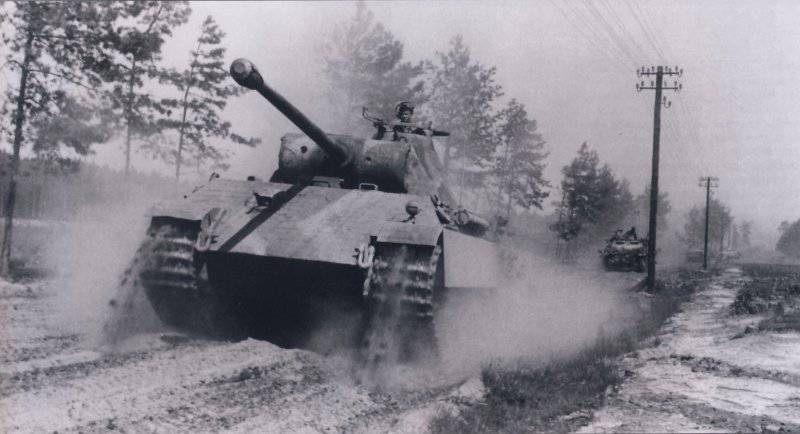
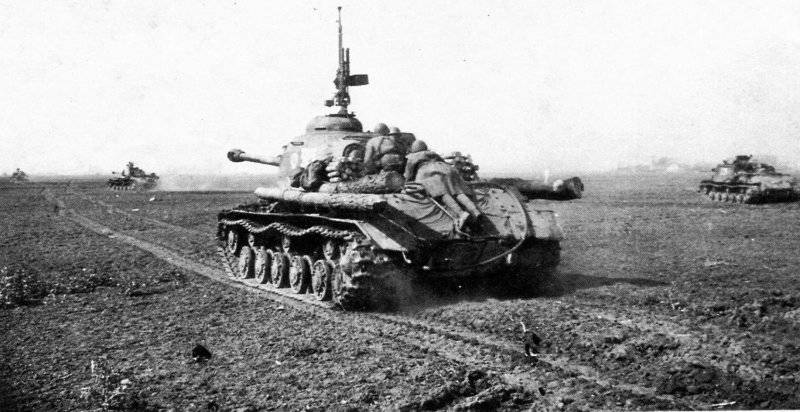
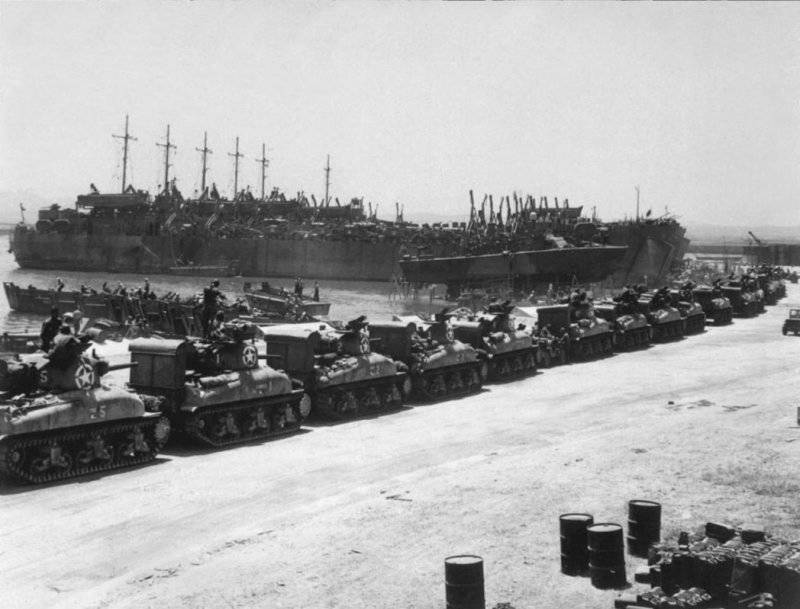
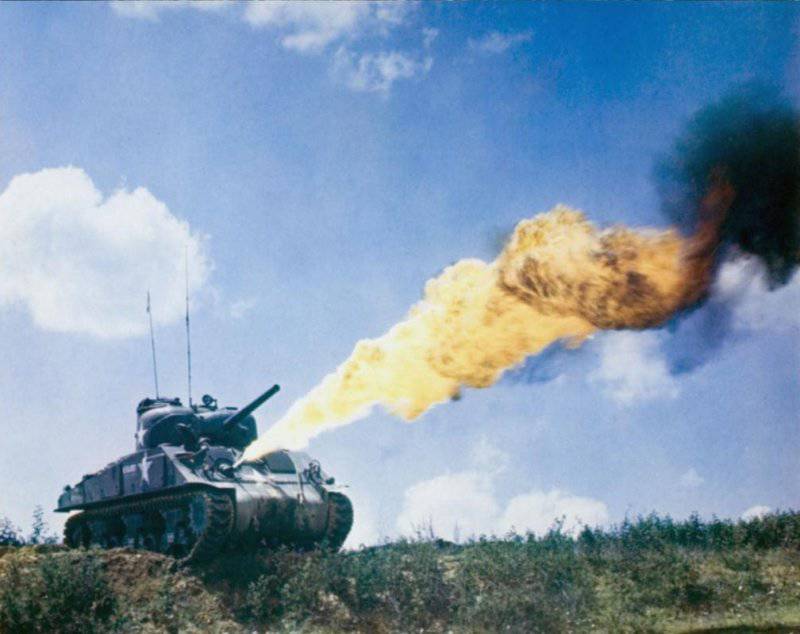
Information